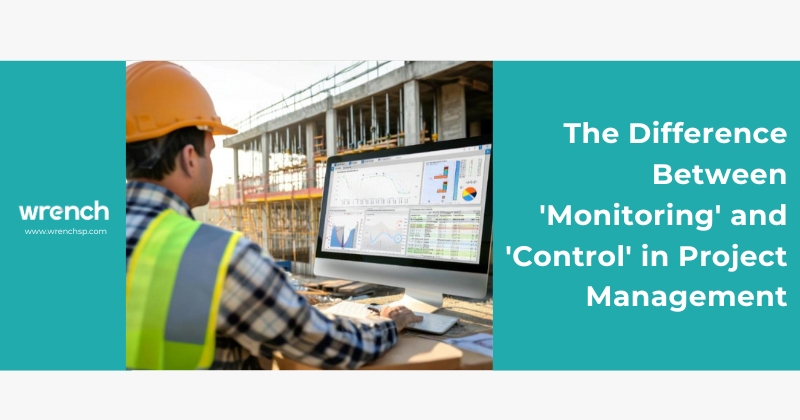When EPC projects fail, there are a number of factors that contributed to that failure, and when companies attempt a post mortem, various inefficiencies in project management tend to crop up as the cause. However, project management is a very broad field; it spans the entire project lifecycle from design to handover. On further analysis, the one overarching factor behind the failure to deliver on time and on budget is the lack of good project monitoring and controlling. Fortunately, in recent years there has been a surge in the development of project monitoring & control solutions and so companies are able to solve the problem, and in fact, the rise of digital project management software has allowed us to plug almost all the identified gaps and solve almost all the problems.
What exactly do we mean by monitoring and controlling? Are they the same? What exactly is monitoring and controlling, what is a project monitoring system or a project controlling software, why are such systems so critical when it comes to project management?
Let’s answer these questions, in reverse order. Project monitoring & control systems are critical to a project’s successful delivery because they can prevent delay and overrun, and if delay and overrun do occur, they can get things back on track with minimal damage to the overall project outcome. Thus, a project monitoring or project system (or a solution that combines the two) is a system that lets you monitor a project’s progress and take action to control the outcome. And no, monitoring and control are not the same thing although sometimes the terms get used interchangeably because they are so closely linked, but there is a difference, both in objective and application.
Now let’s go a bit deeper; what exactly is monitoring and what is controlling in EPC Project Management?
When you get right down to it, the word ‘monitoring’ in the context of project management refers specifically to the process of tracking and measuring the project’s progress ie keeping track of how work is going on and how milestones are being met, if you’re adhering to your schedule or in danger of going off-track, and so on. It’s all about ‘keeping an eye on’, as the word suggests. It’s a passive role, in the sense that you’re observing, keeping watch. On the other hand, when we say ‘Controlling’ we’re usually referring to an active role, it’s all about stepping in and taking action. Like, if you notice that a deviation has occurred (something you noticed thanks to monitoring) and that the deliverable is in danger of being delayed, you would step in and take some kind of action to ensure that delay was averted. That’s the act of controlling. So in other words, monitoring is being on the lookout for mistakes, and if and when a mistake does occur, controlling corrects the mistake to make sure it doesn’t spiral out of control and impact the overall project progress.
Now, the software solution aspect. If you purchased a project monitoring system, the system would be collecting information about work progress, and you’d be able to observe, document, and track how work was progressing at your project site, and if you invested in some kind of project controlling software, the system would be analysing or processing that information in such a way that you could take decisions about how to keep everything on schedule, and on budget.
How do such systems and software work? A project monitoring & controlling software is set up with features that capture and store information about how the project is actually performing in real time. Some systems are also able to compare this performance data against the planned progress, and so you are able to step quickly in if needed, to course-correct. Such project monitoring systems are set up to measure a wide range of parameters, like schedule, budget/cost, how well the QMS was being followed, or any other best practice, and other metrics you might have wanted to build in at the time of implementation, as well as some reporting features, so that when the data reaches you it is easy to follow and act upon – namely, to adjust or change or correct anything. And since monitoring is so critical, a really good monitoring system, whether it was a stand-alone feature or bundled together with a project controlling software, would be able to document KPIs (key performance indicators) as well as the usual project tasks and activities, so that the project management team would get enough information to get a clear and accurate picture of how the project was actually progressing.
To conclude, monitoring and controlling are at the heart of successful project delivery and digital technology has transformed both project monitoring & control.
